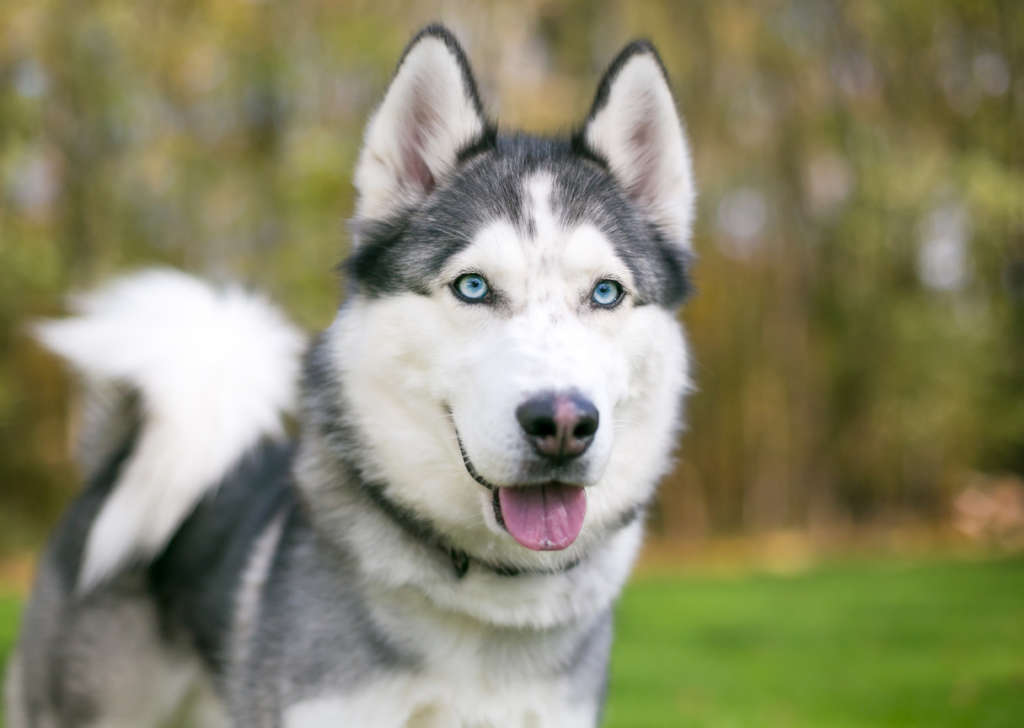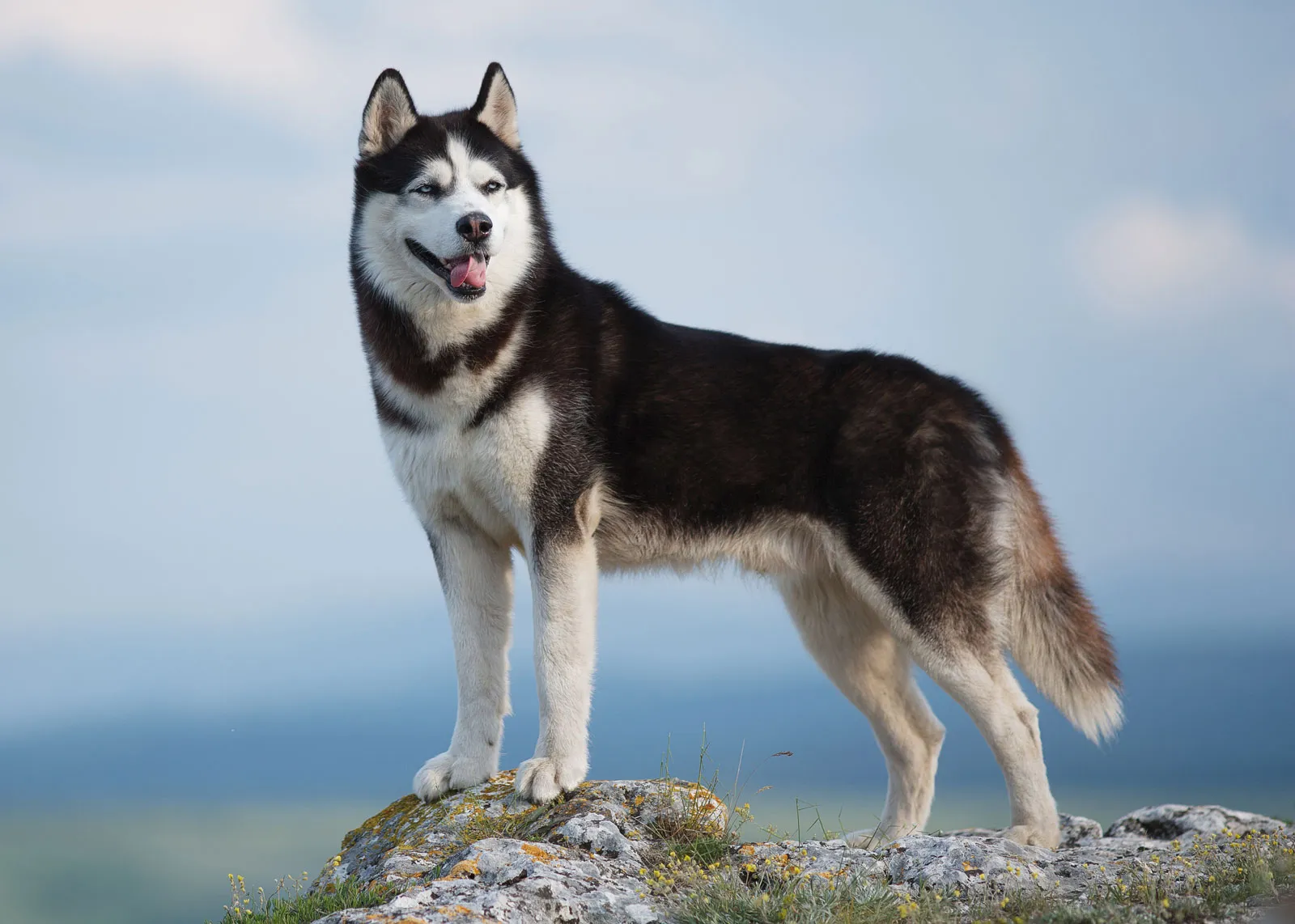
The Siberian Husky was developed by the Chukchi people of northeastern Siberia over 3,000 years ago. Bred for endurance and resilience, these dogs pulled light loads across vast, frozen landscapes, thriving in harsh Arctic conditions.
In the early 20th century, Siberian Huskies were introduced to Alaska during the Gold Rush, where they gained fame as racing and working sled dogs. Their legendary endurance and friendly nature led to international acclaim, particularly after the 1925 "Great Race of Mercy," where Huskies helped deliver life-saving diphtheria serum to Nome, Alaska.
The Siberian Husky is now one of the most recognizable and beloved dog breeds worldwide. Its striking appearance, playful nature, and adventurous spirit have made it a favorite among active families and dog enthusiasts.
However, Huskies are best suited for owners who understand their unique needs for exercise, structure, and mental stimulation. Their popularity continues thanks to their good looks, friendly demeanor, and cultural presence in movies and media.
The Siberian Husky is a medium-sized, powerful dog built for speed, stamina, and cold weather survival.
• Height: 20–23.5 inches (51–60 cm)
• Weight: 35–60 pounds (16–27 kg)
• Build: Compact, muscular, and athletic
• Coat: Dense double coat; soft insulating undercoat and straight outer coat
• Color: Wide range including black, white, gray, red, sable, and agouti; often with distinctive markings
• Head: Slightly rounded skull with a straight muzzle
• Eyes: Almond-shaped; blue, brown, or one of each (heterochromia)
• Ears: Medium-sized, triangular, and erect
• Tail: Well-furred, sickle-shaped, and carried over the back
Their expressive faces, often highlighted by striking eye colors, add to their charm and allure.
Siberian Huskies are known for their outgoing, friendly, and mischievous personalities.
• Affectionate: Very loving and good with families, including children.
• Energetic: High energy levels; they need lots of physical activity.
• Independent: Strong-willed and can be stubborn.
• Sociable: Enjoys the company of people and other dogs.
• Vocal: Famous for their howls, "talking," and wide range of expressive sounds.
They thrive in active homes where they can be both physically and mentally challenged.

The Siberian Husky is ideal for:
• Active individuals or families who enjoy outdoor adventures
• People looking for a friendly, social dog
• Owners who appreciate an intelligent but independent-minded breed
• Homes with secure fencing and space to run
However, it may not be ideal for:
• First-time dog owners unprepared for their high exercise needs
• Homes without secure yards (Huskies are notorious escape artists)
• Owners seeking an obedient, off-leash reliable dog
• Sedentary households
Proper care is essential to meet the Siberian Husky's physical and mental needs.
• Exercise: High; requires at least 1–2 hours of vigorous activity daily.
• Training: Early socialization and consistent, positive reinforcement are key.
• Grooming: Moderate; weekly brushing, daily during heavy shedding seasons ("blowing coat").
• Living Environment: Best suited for colder climates; must have space to run.
• Feeding: High-quality diet suitable for active, medium-sized breeds.
Mental stimulation through puzzles, training games, and interactive activities is crucial to prevent boredom and destructive behavior.
Siberian Huskies are generally healthy but can be prone to:
• Hip dysplasia
• Progressive retinal atrophy (PRA)
• Cataracts
• Hypothyroidism
• Zinc deficiency
Their lifespan typically ranges from 12 to 14 years with good veterinary care and an active lifestyle.

• Alaskan Malamute: Larger, stronger, and more powerful; Malamutes are built for heavier loads, while Huskies are faster.
• Samoyed: Both are Arctic breeds with friendly temperaments, but Samoyeds tend to be more people-oriented and fluffier.
• Akita Inu: More reserved and protective compared to the sociable and energetic Husky.
If you’re looking for a fun-loving, adventurous, and highly social companion who will keep you active and entertained, the Siberian Husky could be perfect. They require an owner who can match their energy and understand their independent, sometimes mischievous spirit.
Prospective owners must be ready to provide the physical and mental stimulation these intelligent dogs crave.
Choose reputable breeders who screen for hip and eye health conditions. Siberian Husky rescue groups are also active and offer many Huskies looking for experienced homes.
United Pet Club offers microchip registration, training resources, and care support tailored for energetic breeds like the Siberian Husky.